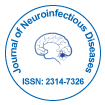Major Inhibitory Neurotransmitter in the CNS and Neurotransmission effect Human Behavior?
Received: 02-Nov-2021 / Accepted Date: 16-Nov-2021 / Published Date: 23-Nov-2021
Introduction
Neurotransmitters are regularly alluded to as the body’s chemical flag-bearers. They are the atoms utilized by the anxious framework to transmit messages between neurons, or from neurons to muscles. Communication between two neurons happens within the synaptic cleft. Single ions are also considered neurotransmitters by some [1]. Here, electrical signals that have voyage along the axon are briefly changed over into chemical ones through the discharge of neurotransmitters, causing a particular reaction within the accepting neuron. Neuromodulators are a bit distinctive, as they are not limited to the synaptic cleft between two neurons, and so can influence expansive numbers of neurons at once. Neuromodulators subsequently direct populaces of neurons, whereas moreover working over a slower time course than excitatory and inhibitory transmitters. Most neurotransmitters are either little amine atoms, amino acids, or neuropeptides. Excitotoxicity has been implicated in certain chronic diseases including ischemic stroke, epilepsy, amyotrophic lateral sclerosis, Alzheimer’s disease, Huntington disease, and Parkinson’s disease [2].
The primary neurotransmitter to be found was a little particle called acetylcholine. It plays a major part within the fringe apprehensive framework, where it is discharged by engine neurons and neurons of the autonomic nervous system. Glutamate is the essential excitatory transmitter within the central apprehensive framework. Fluoxetine is a selective serotonin re-uptake inhibitor (SSRI), which blocks re-uptake of serotonin by the presynaptic cell which increases the amount of serotonin present at the synapse and furthermore allows it to remain there longer, providing potential for the effect of naturally released serotonin [3]. Numerous neuromodulators, such as dopamine, are monoamines. Noradrenaline is another monoamine, and is the essential neurotransmitter within the thoughtful apprehensive framework where it works on the action of different organs within the body to control blood weight, heart rate, liver work and numerous other functions. Neurons that utilize serotonin venture to different parts of the apprehensive framework. As a result, serotonin is included in capacities such as rest, memory, craving, disposition and others. Histamine, the final of the major monoamines, plays a part in digestion system, temperature control, controlling different hormones, and controlling the sleep-wake cycle, among other work.
Brain cells communicate with each other, and with alternative cells at intervals the body, through very little atoms referred to as neurotransmitters (NT). NGO square measure discharged by neurons, and square measure picked up by targeted on cells through NGO receptors. One place to looked for a neighborhood of qualities in human behavior is that the qualities dominant NGO and NTR. Unnoticeable changes in either of those atoms might have vital impacts on behavior, and beyond question researchers square measure beginning to connect explicit changes in these qualities with activity modifications. In neurons, AN agonist drug might activate neurochemical receptors either directly or indirectly. Direct-binding agonists is more characterised as full agonists, partial agonists, inverse agonists [4].The NGO salt and its receptor square measure basic in learning and memory. So what happens to a neurochemical once its job is complete? Once the neurochemical has had the designed result, its activity is stopped by 3 mechanisms: In prepare for neurons to send messages in the course of the body, they need to be ready to communicate with each other to transmit signals. Typically, neurochemical receptors square measure placed on the postsynaptic vegetative cell, whereas neurochemical autoreceptors square measure placed on the presynaptic vegetative cell, as is that the case for amine neurotransmitters [5]. In any case, neurons don’t seem to be essentially associated to 1 another. At the conclusion of every vegetative cell is also a small gap referred to as a neural association and in attempt to communicate with the another cell, the flag should be ready to cross this tiny house. This happens through a prepare called neurotransmission. As with varied of the body’s forms, things will in some cases go wide. It’s perhaps not astounding that a framework as endless and sophisticated because the human anxious framework would be helpless to issues. Neurons may not create ample of a particular neurochemical. Neurotransmitters is also reabsorbed moreover chop-chop moreover varied neurotransmitters is also deactivated by enzymes.Too much of a particular neurochemical is also discharged. Having an excessive amount of salt has been connected to medicine diseases like brain disease, MS, Alzheimers, stroke, and ALS [6].
References
- Kodirov SA, Takizawa S, Joseph J, Kandel ER, Shumyatsky GP, et al. (2006). Synaptically released zinc gates long-term potentiation in fear conditioning pathways. Proceedings of the National Academy of Sciences of the United States of America. 103 (41): 15218–23.
- Yang JL, Sykora P, Wilson DM, Mattson MP, Bohr VA (2011) The excitatory neurotransmitter glutamate stimulates DNA repair to increase neuronal resiliency. Mechanisms of Ageing and Development. 132: 405–11.
- Yadav VK, Ryu JH, Suda N, Tanaka KF, Gingrich JA, et al. (2008) Lrp5 controls bone formation by inhibiting serotonin synthesis in the duodenum. Cell 135 (5): 825–37.
- Miller GM (2011) The emerging role of trace amine-associated receptor 1 in the functional regulation of monoamine transporters and dopaminergic activity. J Neurochem 116 (2): 164–76.
- Bittigau P, Ikonomidou C (1997) Glutamate in neurologic diseases. J Child Neurol 12 (8): 471–85.
Citation: Chaiyamoon A (2021) Major Inhibitory Neurotransmitter in the CNS and Neurotransmission effect Human Behavior? J Neuroinfect Dis 12: 361.
Copyright: © 2021 Chaiyamoon A. This is an open-access article distributed under the terms of the Creative Commons Attribution License, which permits unrestricted use, distribution, and reproduction in any medium, provided the original author and source are credited.
Select your language of interest to view the total content in your interested language
Share This Article
Recommended Journals
Open Access Journals
Article Usage
- Total views: 2515
- [From(publication date): 0-2021 - Dec 19, 2025]
- Breakdown by view type
- HTML page views: 1823
- PDF downloads: 692
